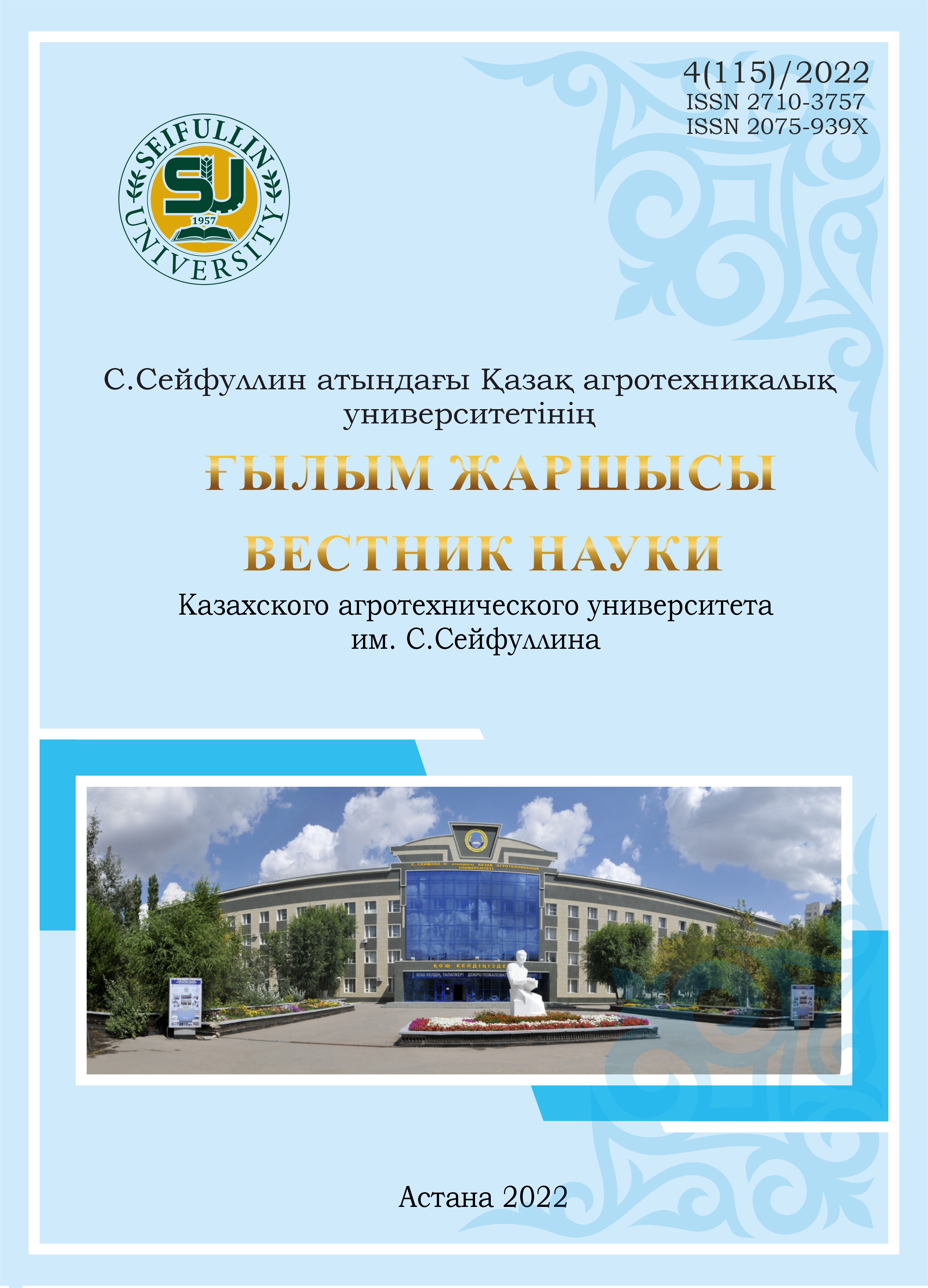STUDYING THE INFLUENCE OF THE VERMI FEED ADDITIVE ON DOMESTIC BIRDS (LAYING HENS)
vermic feed additive; birds; agriculture; biomass of red Californian worms; productivity; feed diet.
DOI:
https://doi.org/10.51452/kazatu.2022.4.1243Keywords:
vermic feed additive; birds; agriculture; biomass of red Californian worms; productivity; feed diet.Abstract
Target. To study the possibility of using vermicorm additives in the diets of laying hens to ensure better bsorption of nutrients in the diet of chickens. The results of experimental studies conducted on the use of a new feed additive derived from the biomass of red California worms as poultry feed are presented. The following optimal ratios of components in the developed feed additive in mass have been established. %: biomass of red California worms (6.0), sodium chloride (3.0), seaweed (5.0), calcium peroxide (2.0) the rest is a mixture of meal and cake (mass ratio 1:1) production of cottonseed oil. Scientific novelty. The originality of the solution to the problem lies in optimizing the feeding programs of birds of the egg productivity direction by using a new vermicorm additive. The main task is to replace synthetic antibiotics used for the prevention and treatment of birds and animals. The proposed feed additive (FA) is biologically active, has increased nutritional value due to the content of the complex of interchangeable and essential amino acids of animal and plant origin. In addition, it contains the necessary amount of micro (Se, I, Cu, Mo, Zn, F, etc.) and macronutrients that ensure the normal functioning of birds. According to the results of the experiment, during the period, the introduction of a fodder additive into the diet of hens of the layers noticed an increase in the intensity of egg production in the first group more by 20%, in the second group of hens of laying hens - 30% and in the third group - 50% compared to the control group.

